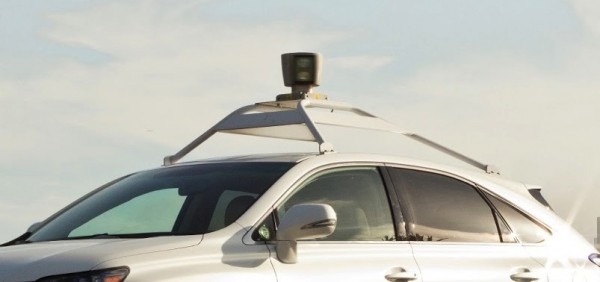Google's Self-Driving Car Could Lose Its Hat With New Laser Tech
Self-driving cars like Google's controversial 25mph autonomous pod could get significantly more affordable to make, researchers have promised, with a new LIDAR radar system far cheaper than the expensive turret on top of current models. The laser tracking system – the distinctive "turret" on top of the Google self-driving car – is one of the single most expensive components in the vehicle, estimated to add around $80,000 to the bill of materials. However, a Berkley team believes it could do the same thing at a fraction of the cost.
Like the existing LIDAR system, the chips developed by the team at the University of California, Berkeley, relies on bouncing light off of potential obstacles. A laser beam is rapidly fired out in 360-degrees around the car – hence it being mounted on the top, where it's not likely to be obstructed – and then, by measuring the changes in the light frequencies that are reflected back, a digital image of the 3D topography can be constructed.

However, they're also dependent on power-hungry, bulky lasers. By switching to frequency-modulated continuous-wave (FMCW) LIDAR, the Berkley team has come up with a system that's smaller and more frugal, using MEMS tunable VCSELs.
MEMS – or micro-electrical-mechanical system – can make tiny tuning adjustments to the laser light, which is then "chirped" out at different frequencies. The lasers themselves are vertical-cavity surface-emitting lasers, which are cheaper, while the frequencies selected match the natural resonance of the MEMS materials, so that they require less amplification before processing.
The result is a sensor system that's said to come in at a fraction of the cost of $80k+ LIDAR, but still delivering 3D imaging with a range of around 30 feet.
That could have significant implications not only for self-driving cars, but anything that demands accurate 3D scanning. Microsoft's Kinect sensor bar for motion gaming is one example, while Google's new Project Tango tablet – relying on a cluster of cameras and depth sensors – is another potential application.
Before that happens, however, the researchers need to package everything together into something chip-scale, which could feasibly be fitted into devices as small as a cellphone. Users could dismiss incoming calls and notifications simply by waving their hand or making a gesture in their phone's direction.
SOURCE OSA
